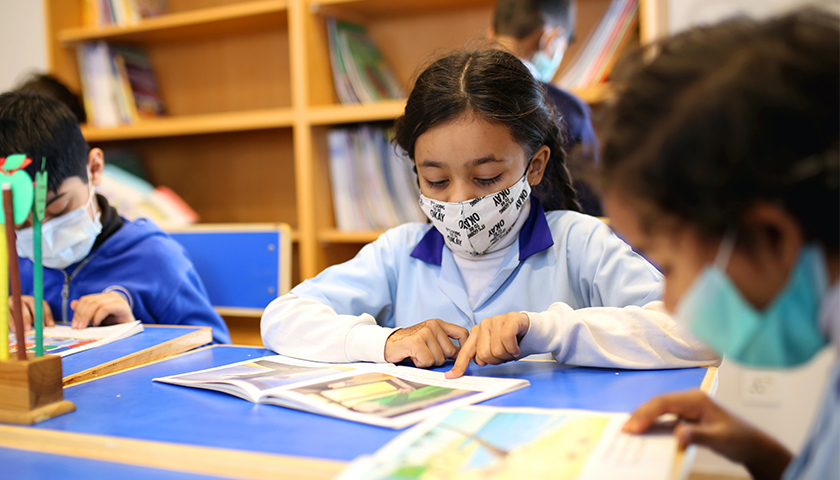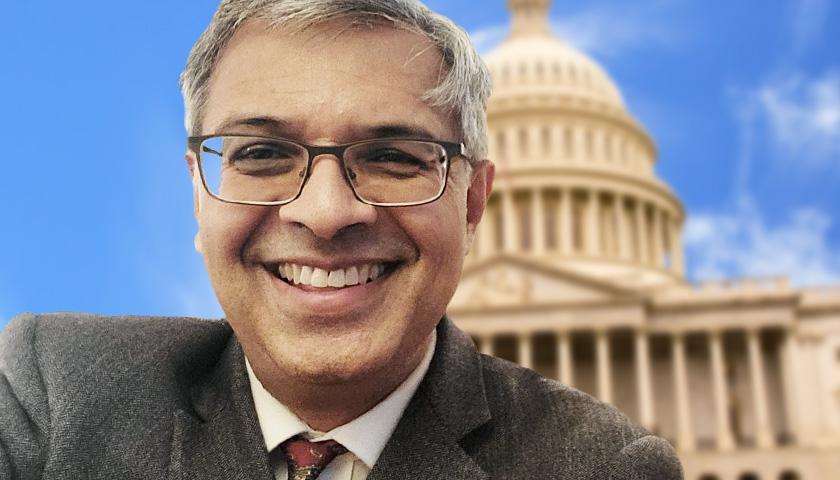by Jon Miltimore
The ACLU on Tuesday announced it is bringing a lawsuit against South Carolina over its mask policy.
The Palmetto State is one of seven states—along with Texas, Iowa, Oklahoma, Arizona, Utah, and Florida— that have policies in place banning schools from having mask policies. Thirteen states, meanwhile, have laws that mandate masks in schools. The majority of states (30) allow school districts to determine their own mask policies.
“We’re suing to end South Carolina’s ban on mask requirements in schools, with Disability Rights South Carolina, Able South Carolina, and parents,” the ACLU said. “Students with disabilities are effectively being excluded from public schools because of this ban. Courts must intervene.”
The ACLU’s action is the latest salvo in a battle over a question that divides America: should schools be able to compel children to wear face coverings in school?
BREAKING: We’re suing to end South Carolina’s ban on mask requirements in schools, with Disability Rights South Carolina, Able South Carolina, and parents.
Students with disabilities are effectively being excluded from public schools because of this ban.
Courts must intervene.
— ACLU (@ACLU) August 24, 2021
New Science on Masks
With fall approaching, many Americans are wondering whether they should send their children to school with a mask—or if they’ll even have a choice.
A recent New York magazine article states that the science on masks “remains uncertain,” but noted the Centers for Disease Control and Prevention (CDC) in May published a large-scale study of COVID transmission in US schools.
The study, which analyzed some 90,000 elementary students in 169 Georgia schools from November 16 to December 11, found that there was no statistically significant difference in schools that required students to wear masks compared to schools where masks were optional.
“The 21% lower incidence in schools that required mask use among students was not statistically significant compared with schools where mask use was optional,” the CDC said. “This finding might be attributed to higher effectiveness of masks among adults, who are at higher risk for SARS-CoV-2 infection but might also result from differences in mask-wearing behavior among students in schools with optional requirements.”
As New York magazine’s David Zweig noted, these findings, as well as other statistically insignificant preventive measures, “cast doubt on the impact of many of the most common mitigation measures in American schools.”
The CDC’s findings on masks and other preventive measures would not be particularly noteworthy or controversial outside the US. As New York magazine noted, many European nations have exempted students from mask mandates—including the UK, all of Scandinavia, the Netherlands, Switzerland, and even France and Italy—though with varying age cutoffs. The results have not been dire.
“Conspicuously, there’s no evidence of more outbreaks in schools in those countries relative to schools in the U.S., where the solid majority of kids wore masks for an entire academic year and will continue to do so for the foreseeable future,” wrote Zweig. “These countries, along with the World Health Organization, whose child-masking guidance differs substantially from the CDC’s recommendations, have explicitly recognized that the decision to mask students carries with it potential academic and social harms for children and may lack a clear benefit.”
These findings in the US, however, are another matter.
Masks have been one of the most polarizing issues in the country during the pandemic, perhaps because US policy has whipsawed back and forth. Americans remain bitterly divided on the issue. There have been careers ruined, messy retractions, and endorsements lost.
Jay Cutler dropped from Uber Eats campaign because he opposes mask mandates https://t.co/j1iElMjHyl
— The Washington Post (@washingtonpost) August 16, 2021
Arnold Schwarzenegger loses Arnold Classic sponsorship for comments about face mask importance https://t.co/FJgISoAwAc
— Columbus Dispatch (@DispatchAlerts) August 23, 2021
In particular, the CDC’s findings are not helpful to politicians and bureaucrats who continue to argue that students must be masked during school.
“Whether [students] are vaccinated or not, they need to wear a mask,” Dr. Anthony Fauci said during a recent panel discussion streamed online.
For this reason or some other, the CDC determined to not include its finding that “required mask use among students was not statistically significant compared with schools where mask use was optional” in the summary of its report, which has received very little media attention to date.
Meanwhile, the mask wars are heating up.
The Biden Administration recently directed Education Secretary Miguel Cardona to employ “all of his oversight authorities and legal actions” against governors preventing schools from passing mask mandates. Cardona acted swiftly.
“These states are needlessly placing students, families, and educators at risk,” the Education Secretary wrote in a public letter. “Yet in each of these states, there are also educators and others who are taking steps to protect the health and safety of their school communities.”
The Common Good?
The CDC’s findings are hardly the only research on the issue of masks and COVID transmission, and the study will not be the final word—in large part because masks are too politically divisive to allow either side to “win.” The question is why.
The economist Ludwig von Mises noted many years ago that a great deal of modern social conflict stems from a struggle over who gets to design the world, public authorities or individuals. Masks are no different. By removing this decision from the individual, public health officials turned masks into a political conflict.
Masks are no longer simply a matter of individual or public health. Bear in mind, children face a low risk of falling sick or being hospitalized with COVID—with or without a face mask. Small children are far more likely to die of the flu, a car accident, a swimming pool, cancer or some other ailment than COVID-19, CDC data show. The battle of school masks mandates has now become a political conflict, part of a larger struggle between the individual and collectivism.
“Collectivism means the subjugation of the individual to a group—whether to a race, class or state does not matter,” Ayn Rand once observed. “Collectivism holds that man must be chained to collective action and collective thought for the sake of what is called ‘the common good.’”
In modern America, the common good now means using any means necessary to coerce individuals to get vaccinated and wear masks—including government coercion and public shame in various forms. The health of the collective—both literal and figurative—demands it.
This is unhealthy, some say, and potentially dangerous.
Martin Kulldorff, a professor at Harvard Medical School who studies infectious diseases, recently observed that the way we’re treating the spread of COVID-19 is unique compared to other pandemics throughout human history.
“For thousands of years, disease pathogens have spread from person to person. Never before have carriers been blamed for infecting the next sick person,” Kulldorff noted on Twitter. “That is a very dangerous ideology.”
For thousands of years, disease pathogens have spread from person to person. Never before have carriers been blamed for infecting the next sick person. That is a very dangerous ideology.
— Martin Kulldorff (@MartinKulldorff) August 24, 2021
Indeed it is.
Whether masks promote health is unclear—many Europeans without mask mandates have far lower COVID mortality rates than the US. What is far more certain—in light of the lessons of history—is that a healthy society is one that empowers individuals with choice and freedom.
– – –
Jonathan Miltimore is the Managing Editor of FEE.org. His writing/reporting has been the subject of articles in TIME magazine, The Wall Street Journal, CNN, Forbes, Fox News, and the Star Tribune.






Accurate call: Chinese Bacteria Reinhaler!!
If you ever had any doubt the ACLU was a complete fraud, this should make it clear to you.
Using disabled children as a human shield to impose monolithic non-science on all children has nothing to do with liberty. They have no claim here. None of these states are forbidding a student from choosing to wear a Chinese bacteria reinhaler if they do choose.
Which just goes to show, masks do not work. They are nothing more than virtue signaling and a tool of submission.